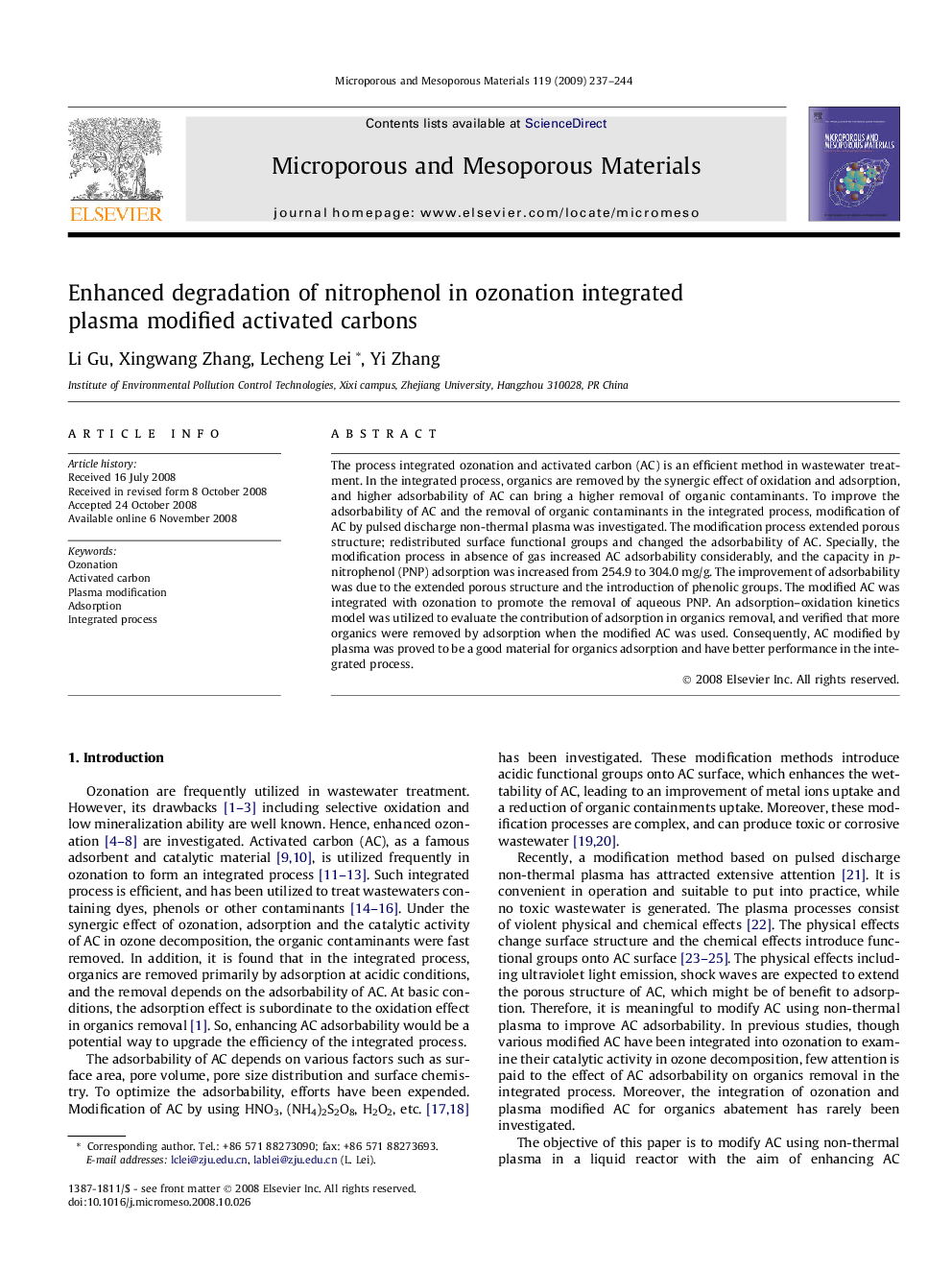| Article ID | Journal | Published Year | Pages | File Type |
|---|---|---|---|---|
| 76507 | Microporous and Mesoporous Materials | 2009 | 8 Pages |
The process integrated ozonation and activated carbon (AC) is an efficient method in wastewater treatment. In the integrated process, organics are removed by the synergic effect of oxidation and adsorption, and higher adsorbability of AC can bring a higher removal of organic contaminants. To improve the adsorbability of AC and the removal of organic contaminants in the integrated process, modification of AC by pulsed discharge non-thermal plasma was investigated. The modification process extended porous structure; redistributed surface functional groups and changed the adsorbability of AC. Specially, the modification process in absence of gas increased AC adsorbability considerably, and the capacity in p-nitrophenol (PNP) adsorption was increased from 254.9 to 304.0 mg/g. The improvement of adsorbability was due to the extended porous structure and the introduction of phenolic groups. The modified AC was integrated with ozonation to promote the removal of aqueous PNP. An adsorption–oxidation kinetics model was utilized to evaluate the contribution of adsorption in organics removal, and verified that more organics were removed by adsorption when the modified AC was used. Consequently, AC modified by plasma was proved to be a good material for organics adsorption and have better performance in the integrated process.
